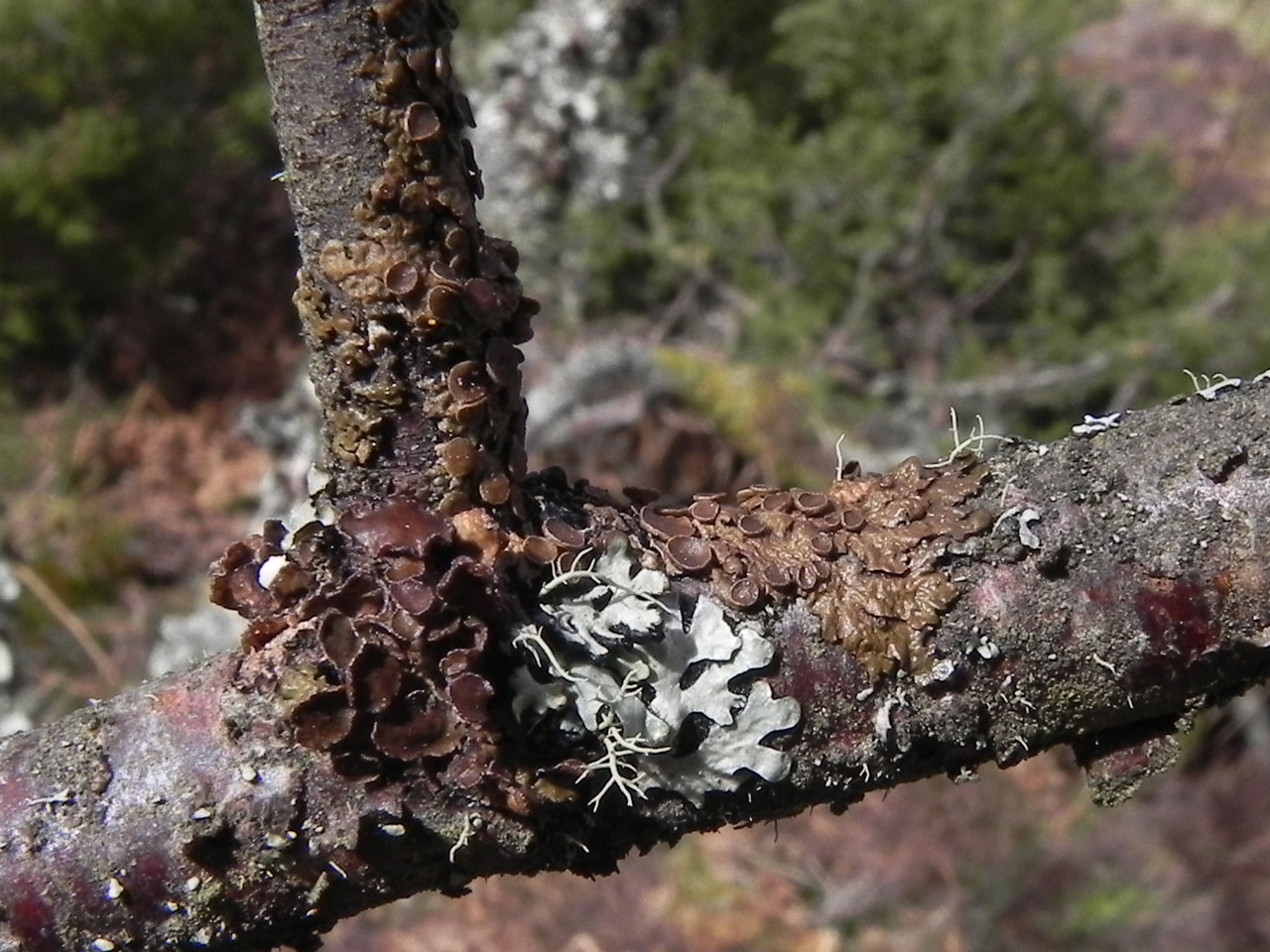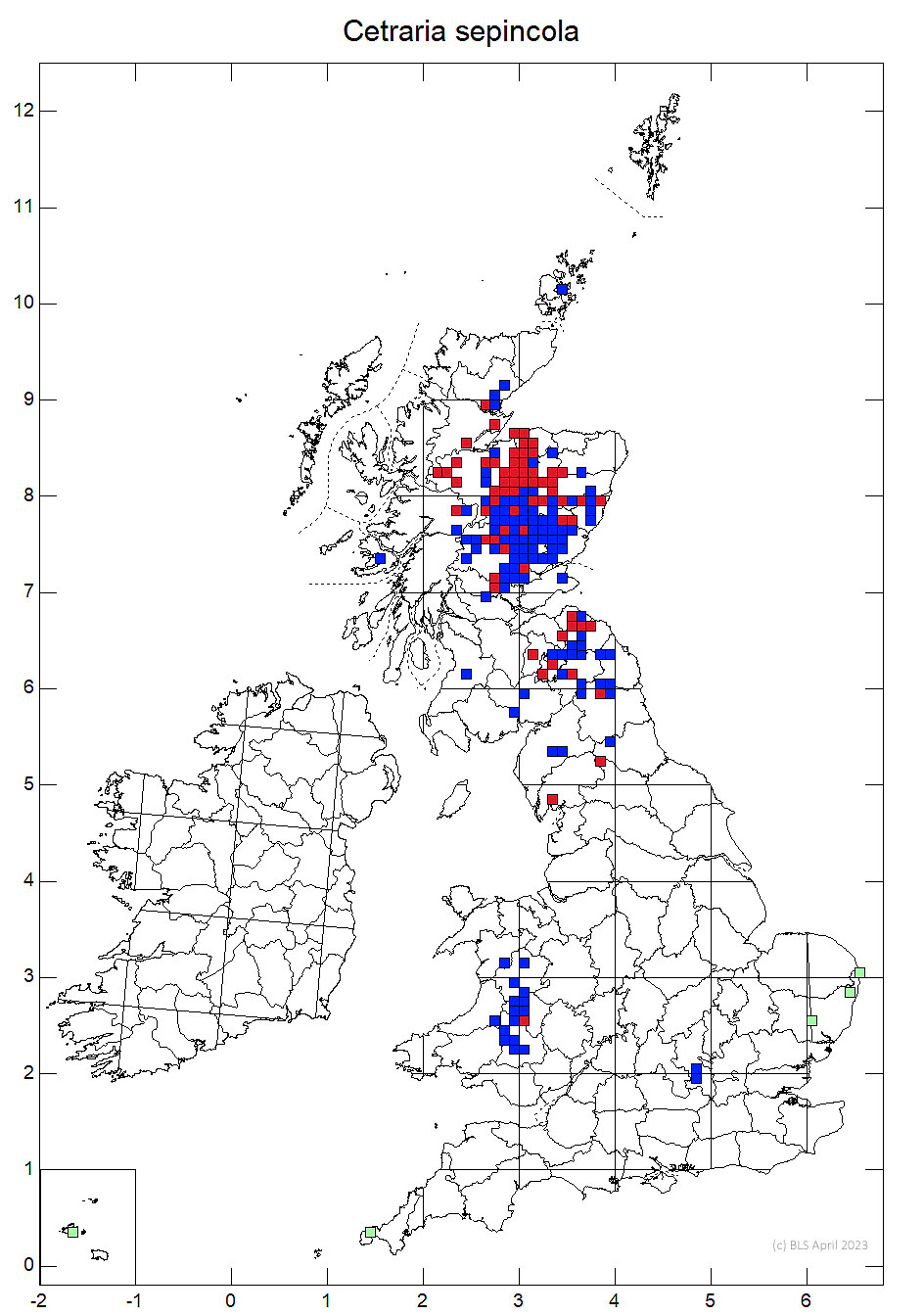Cetraria sepincola
A distinctive leafy lichen characterised by the abundant apothecia often covering the whole thallus. They are carried at the ends of short lobes on the dark brown irregularly lobate thallus. A sub-oceanic northern species of acidic twigs, frequent in eastern Scotland, but now rare and declining to the south especially in Wales.
Thallus 1–2 cm diam., 0.5–1 cm tall, foliose, forming neat round cushion-like tufts, ± monophyllous, irregularly incised-lobate; upper surface dark grey-green, brownish or olive-brown, matt, ± wrinkled; lower surface white or pale brown, weakly veined or wrinkled; rhizines pale, unbranched or branched, scattered. Apothecia abundant, often covering the entire thallus, at the ends of short lobes; disc 1–4 mm diam., red-brown, smooth, flat or ± convex with a thin thalline margin. Ascospores 6–9.5 × 3.5–5 μm. Medulla C–, K–, KC–, Pd–, UV– (protolichesterinic acid).
Distinguished from Tuckermannopsis chlorophylla by the abundant apothecia, the darker thallus and absence of soredia. Cetraria sepincola superficially resembles Parmelia s. lat. but is characterized by the marginal, almost always inclined, apothecia and the pycnidia which are never sunken in the thallus but are on marginal projections.
On twigs, predominantly of Birch, more rarely Sallow and Juniper, often with Tuckermannopsis chlorophylla and Melanohalea septentrionalis in well-lit situations, rarely on fence-posts.

Locally abundant in Scotland (Highlands, mainly C. & E.), extending to and rare in N. England, C. Wales. Declining in the south, especially Wales.
Seriously declining in the south, especially in Wales, where it has been Red Listed. Potentially sensative to both ammonia pollution and warmer weather.
Wales: Vulnerable
Cannon, P., Divakar, P., Yahr, R., Aptroot, A., Clerc, P., Coppins, B., Fryday, A., Sanderson, N. & Simkin, J. (2023). Lecanorales: Parmeliaceae, including the genera Alectoria, Allantoparmelia, Arctoparmelia, Brodoa, Bryoria, Cetraria, Cetrariella, Cetrelia, Cornicularia, Evernia, Flavocetraria, Flavoparmelia, Hypogymnia, Hypotrachyna, Imshaugia, Melanelia, Melanelixia, Melanohalea, Menegazzia, Montanelia, Nesolechia, Parmelia, Parmelina, Parmeliopsis, Parmotrema, Platismatia, Pleurosticta, Protoparmelia, Pseudephebe, Pseudevernia, Punctelia, Raesaenenia, Tuckermannopsis, Usnea, Vulpicida and Xanthoparmelia. Revisions of British and Irish Lichens 33: 1-98.
Text by N A Sanderson, based on Cannon et al (2023).

